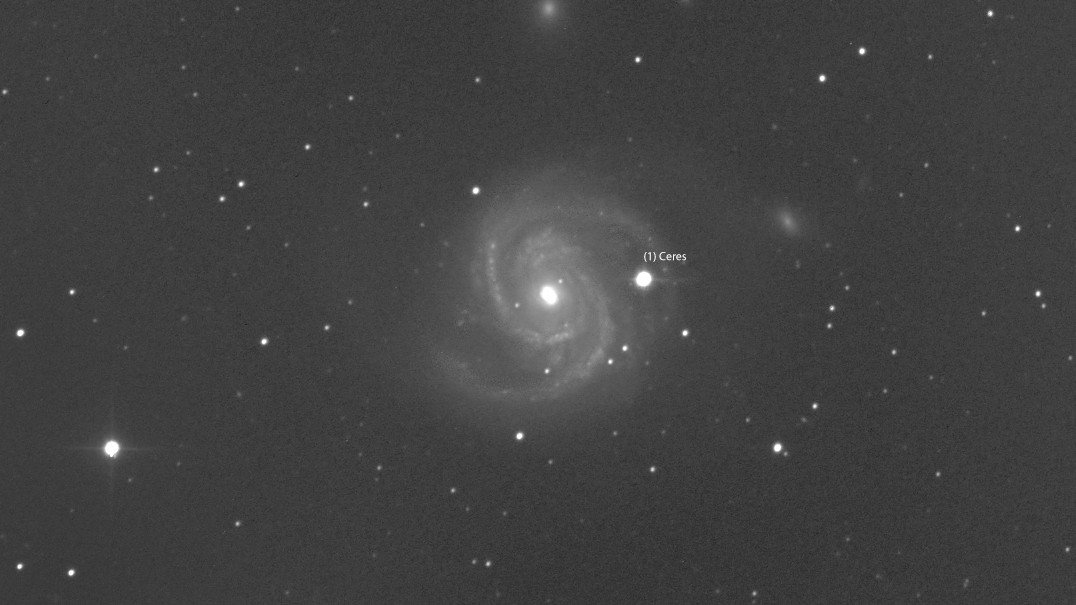How to watch Ceres, a dwarf planet 14 times smaller than Pluto, photobomb a spiral galaxy in the sky this weekend
Watch live online as the dwarf planet Ceres swoops in front of the 'grand design' spiral galaxy Messier 100 this weekend.

This weekend, you can watch live as the first asteroid ever discovered passes across one of the night sky's most beautiful spiral galaxies.
The Rome-based Virtual Telescope Project will host a livestream starting at 11 p.m. EDT on Sunday, March 26 (03:00 UTC on Monday, March 27), when Ceres will be visible in front of Messier 100 (M100), a stunning example of a grand-design spiral galaxy, according to NASA.
Ceres is the largest object in the asteroid belt between Mars and Jupiter, according to NASA, and accounts for nearly a third of the asteroid belt's mass. Initially labeled an asteroid upon its discovery more than 200 years ago, it's been classed as a dwarf planet since 2006, the same year that Pluto was demoted from a planet to a dwarf planet. Ceres is about 14 times smaller than Pluto and is the only dwarf planet in the inner solar system.
This weekend, Ceres will appear to "meet" the distant spiral galaxy M100 in the night sky, according to the Virtual Telescope Project, though the two objects will actually be trillions of miles apart.
At the time of the line-of-sight view, Ceres will be about 150 million miles (240 million kilometers) from Earth while M100 is at about 55 million light-years away.
The meeting will take place in the constellation Coma Berenices just a few days after Ceres' opposition, which is when Earth passes between it and the sun. That's great news for skywatchers because Ceres only appears 100% illuminated from Earth when close to opposition. It will shine at magnitude 7, which is just out of view of the naked eye. A pair of stargazing binoculars should reveal Ceres, while a good small telescope will also show M100, according to the Virtual Telescope Project.
Ceres was discovered by astronomer Giuseppe Piazzi in 1801. Its average distance from Earth is comparable to that of Mars, and its closeness has inspired some researchers to suggest that in the future it could be a target for human habitats. NASA's Dawn spacecraft visited Ceres from 2015 to 2016, taking some stunning images.
Get the world’s most fascinating discoveries delivered straight to your inbox.
M100's spectacular spiral arms host several small black holes, including the youngest one ever observed in our cosmic neighborhood, according to NASA. M100 was discovered by French astronomer Pierre Méchain in 1781.

Jamie Carter is a freelance journalist and regular Live Science contributor based in Cardiff, U.K. He is the author of A Stargazing Program For Beginners and lectures on astronomy and the natural world. Jamie regularly writes for Space.com, TechRadar.com, Forbes Science, BBC Wildlife magazine and Scientific American, and many others. He edits WhenIsTheNextEclipse.com.
 Live Science Plus
Live Science Plus





